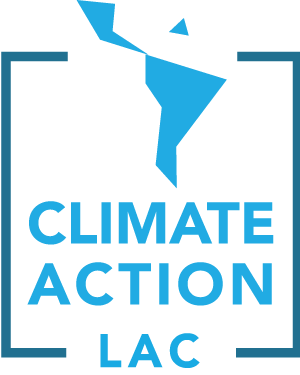Maps
CityAdapt risk analyzes
The concept of “vulnerability to climate change” helps us better understand the cause/effect relationships behind climate change and its impact on people, economic sectors and socio-ecological systems (GIZ, 2017). Within the framework of the CityAdapt project, evaluations were carried out for the 3 project cities, whose maps are accessible below.
Visualize climate risk analyzes
Vulnerability and adaptation to climate change are directly related to the temporal and spatial context of cities. Risks and their impacts as well as responses and actions occur at specific times and places.
How the maps are displayed:
The maps are organized according to the following input categories:
- Exposition
- Risk
- Sensitivity
- Adaptability
For each of these categories, there are input maps, for example:
Risk: Landslide risk, Landslide risk, Flood risk, Drought risk, Water erosion risk, Added risks.
The maps as a result of the analysis are the output information, in a single resulting category: 5 Vulnerability & Socio-environmental vulnerability. For more details please see the PDF documents for each city in vulnerability-studies.
What is the definition of the categories:
- Exposure: People, livelihoods, ecosystems, environmental services, infrastructure, or economic and social assets in locations that could be adversely affected.
- Risk: Potential for consequences due to a hazard. Risk is represented as the probability of occurrence of dangerous events or trends multiplied by the consequences should such events occur.
- Sensitivity: degree to which a system is modified or affected by disturbances.
Adaptive capacity: the ability of systems, institutions, humans, and other organisms to adjust to potential harm, take advantage of opportunities, or respond to consequences. - Vulnerability: Potential for loss (human, physical, economic, natural, or social) due to hazardous events. Vulnerability includes the conditions determined by physical, social, economic and environmental factors or processes, which increase the susceptibility of a community to the impacts of a hazard.
The study area includes the municipalities of Xalapa and Tlalnelhuayocan, the former being the capital of the state of Veracruz characterized by being eminently urban, while the latter is a predominantly rural municipality with a mountainous topography.
The study municipalities are located within the basins of the Río la Antigua and Actopan.
The city of Xalapa has suffered rapid urbanization and unplanned expansion, growing without planning, which has generated a decline and deterioration of key ecosystems in the region (wetlands, green areas, and forests).
This expansive process put pressure on the occupation of the surrounding rural areas, causing populations with fewer resources to settle in peripheral areas with a lack of services and basic infrastructure. Another of the impacts are deficiencies in urban mobility, public safety, water supply, significantly reducing the quality of life of its inhabitants.
For building climate resilience in urban systems:
- Technical studies were carried out to identify the areas of greatest danger from weather-related events: landslides, landslides, erosion and flooding, both in urban and rural areas of Xalapa and San Andrés Tlalnelhuayocan, and the most exposed areas were identified.
- An indicator of socioeconomic sensitivity was built by geostatistical area.
The San Salvador Metropolitan Area (AMSS) includes 14 municipalities and is an area in full population growth, where almost 30% of the total population of the country lives. The project area is the Arenal Montserrat micro-watershed, which is located on part of the territory of the three most populated and urbanized municipalities in the country: San Salvador, Santa Tecla and Antiguo Cuscatlán. The population in the Arenal Monserrat area is approximately 115,500 inhabitants and covers an area of ~55km2.
The micro-basin has a tropical dry forest climate, with average rainfall of 1,700 to 2,000 mm/year. The predominant relief is valley and mountain, of which almost 31% corresponds to vegetation cover, where 90% of this is coffee plantation, 2% broadleaf forest, 2% pasture, 3% riparian forest and 3% bare soil. .
In the micro-watershed, important services are generated for the AMSS in terms of water recharge zones, preservation of biodiversity, support for soil conservation, control of landslides and landslides, regulation of concentrations of air pollution and temperature, and supply of landscape of natural beauty close to the city.
For the construction of climate resilience in the micro-basin:
- Vulnerability Maps were made, providing results: the AMSS is one of the most climatically vulnerable areas of El Salvador due to increases in average annual temperature, reduction in average annual precipitation, strong variations in the temporal and spatial distribution of precipitation, and increased frequency of extreme hydrometeorological events.
- Impacts: on crop production, the spread of pests, river flow, water availability, soil erosion.
- Consequences: family income, livelihood capacity, infrastructure and services are affected, with strong social and economic impacts. Lastly, potential impacts were detected.
Available soon!
